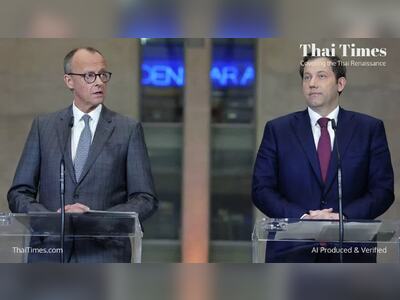Eastern Economic Corridor Land Prices Surge Amid Strong Foreign Investment
Rayong leads with 43.5% increase as industrial and residential demand accelerates across EEC provinces
Land prices in Thailand’s Eastern Economic Corridor (EEC) rose sharply in the first quarter of 2025, driven by robust foreign investment and ongoing infrastructure developments.
According to data from the Real Estate Information Center, the land price index for undeveloped land in the EEC reached 332.2 points, marking a 24.9% increase year-on-year and a 2.6% rise compared to the previous quarter.
This represents the fifth consecutive quarter of growth.
The province of Rayong recorded the most substantial year-on-year growth at 43.5%, with a 27.3% quarter-on-quarter increase, bringing the index to 259.2 points.
This surge was attributed to foreign manufacturing base relocations and industrial expansion both inside and outside established industrial estates.
Factors contributing to Rayong’s attractiveness included geopolitical shifts, global trade reconfigurations, Thailand’s neutral foreign policy stance, and its established logistics and energy infrastructure.
Chon Buri followed with a 33.6% year-on-year and 4.6% quarter-on-quarter increase, reaching 468.4 points.
Demand was strongest in Bang Lamung and Si Racha districts.
Bang Lamung, a key tourism and residential hub, posted the sharpest increase at 126.5% year-on-year.
Si Racha, known for housing industrial workers, recorded an 88.6% year-on-year increase, reflecting demand from Thai and foreign residents, particularly Japanese nationals associated with nearby industrial estates.
Ban Khai district in Rayong ranked third in growth, with a 47.9% increase in land prices.
This area has seen expanded developer interest due to its proximity to infrastructure corridors and industrial zones linked to the EEC.
Mueang Chon Buri and Pluak Daeng district in Rayong followed with year-on-year increases of 33.5% and 11.2%, respectively.
Foreign investment in the EEC reached approximately 47 billion baht in the first quarter of 2025, reflecting a 31% increase compared to the same period in 2024.
Japanese investors comprised the largest group, followed by those from China and Singapore.
The capital inflow has spurred developers to accelerate residential construction to accommodate the growing population of Thai and foreign workers relocating to the region.
In contrast, Chachoengsao province experienced a decline in land prices, falling 13.5% year-on-year and 18.6% quarter-on-quarter to an index level of 161.0 points.
This decrease is attributed to a temporary cooling in residential demand and the province’s lower exposure to industrial investment relative to its EEC counterparts.
The Laem Chabang Port Development Project Phase 3 remains one of the anchor projects within the EEC.
The project is part of broader infrastructure plans aimed at transforming the corridor into a high-tech industrial and logistics hub.
The continued increase in land prices is closely tied to ongoing state and private sector investment aimed at expanding the region’s industrial base and enhancing its strategic role in regional supply chains.
According to data from the Real Estate Information Center, the land price index for undeveloped land in the EEC reached 332.2 points, marking a 24.9% increase year-on-year and a 2.6% rise compared to the previous quarter.
This represents the fifth consecutive quarter of growth.
The province of Rayong recorded the most substantial year-on-year growth at 43.5%, with a 27.3% quarter-on-quarter increase, bringing the index to 259.2 points.
This surge was attributed to foreign manufacturing base relocations and industrial expansion both inside and outside established industrial estates.
Factors contributing to Rayong’s attractiveness included geopolitical shifts, global trade reconfigurations, Thailand’s neutral foreign policy stance, and its established logistics and energy infrastructure.
Chon Buri followed with a 33.6% year-on-year and 4.6% quarter-on-quarter increase, reaching 468.4 points.
Demand was strongest in Bang Lamung and Si Racha districts.
Bang Lamung, a key tourism and residential hub, posted the sharpest increase at 126.5% year-on-year.
Si Racha, known for housing industrial workers, recorded an 88.6% year-on-year increase, reflecting demand from Thai and foreign residents, particularly Japanese nationals associated with nearby industrial estates.
Ban Khai district in Rayong ranked third in growth, with a 47.9% increase in land prices.
This area has seen expanded developer interest due to its proximity to infrastructure corridors and industrial zones linked to the EEC.
Mueang Chon Buri and Pluak Daeng district in Rayong followed with year-on-year increases of 33.5% and 11.2%, respectively.
Foreign investment in the EEC reached approximately 47 billion baht in the first quarter of 2025, reflecting a 31% increase compared to the same period in 2024.
Japanese investors comprised the largest group, followed by those from China and Singapore.
The capital inflow has spurred developers to accelerate residential construction to accommodate the growing population of Thai and foreign workers relocating to the region.
In contrast, Chachoengsao province experienced a decline in land prices, falling 13.5% year-on-year and 18.6% quarter-on-quarter to an index level of 161.0 points.
This decrease is attributed to a temporary cooling in residential demand and the province’s lower exposure to industrial investment relative to its EEC counterparts.
The Laem Chabang Port Development Project Phase 3 remains one of the anchor projects within the EEC.
The project is part of broader infrastructure plans aimed at transforming the corridor into a high-tech industrial and logistics hub.
The continued increase in land prices is closely tied to ongoing state and private sector investment aimed at expanding the region’s industrial base and enhancing its strategic role in regional supply chains.











